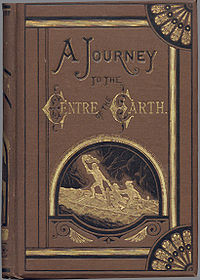The Cabinet of Dr.Caligari is a German Expressionist film made in 1920, directed by Robert Wiene and stars Werner Krauss as the famous Dr.Caligari and Conrad Veidt as the somnambulist, Cesare. The films tells the tale of how the mysterious Dr.Caligari’s somnambulist, Cesare wreaked havoc and panic over the town of Holstenwall. Due to the film’s success, a remake was made in 2005.
The setting of the film is very expressional artistic, with distorted, jagged buildings whit a lot of silhouettes as well as narrowly distorted roads which mainly contains contrasts between light and dark, which is a way to distort reality and links to Francis and Dr.Caligari, “complements the distorted mind of both the fantastical Caligari and Francis.” (Fritz, 2011) Silhouettes and hard lighting is often used to exaggerate to depict the distortedness of the world it is set in. The film also contains a lot of it German Expressionist iconography such as melodramatic acting (like Cesare creeping slowly along the walls.) and the use of colours to depict the good and the bad, i.e. black meaning dominant male evil and dark whereas white is depicted as a young innocent woman, as described by Roger Ebert, “The actors inhabit a jagged landscape of sharp angles and tilted walls and windows, staircases climbing crazy diagonals, trees with spiky leaves, grass that looks like knives. These radical distortions immediately set the film apart from all earlier ones, which were based on the camera's innate tendency to record reality.” (Ebert, 2011).
 |
| Fig 3 The black and white colours reflect on the character’s personality along with heavy dark make up. |
List of Illustrations:
Fig 1: Wienne,
R (1920) The Cabinet of Dr. Caligari Poster (online):
Fig 2: Wienne,
R (1920) The design setting is made to look distorted and illusion of
reality (online):
Fig 3: Wienne,
R (1920) The black and
white colours reflect on the character’s personality along with heavy dark make
up. (online):
Bibliography:
Fritz (2011), NEVER A DAY WITHOUT A LINE: The Cabinet of Dr Caligari [Das Kabinet des
Dr Caligari] (1920) (online):
http://darcimfilms.wordpress.com/2011/06/21/the-cabinet-of-dr-caligari-das-kabinet-des-dr-caligari-1920/
- (accessed on 27/10/11)
Ebert, R (2009), The Cabinet of Dr. Caligari (1920) (online):
http://rogerebert.suntimes.com/apps/pbcs.dll/article?AID=/20090603/REVIEWS08/906039987/1023
- (accessed on 27/10/11)
Taylor,D (2011), Review: "The Cabinet of Dr.
Caligari" (1920) (online) :
http://www.daveonfilm.com/review-the-cabinet-of-dr-caligari-1920-10061.html
- (accessed on 27/10/11)


















































